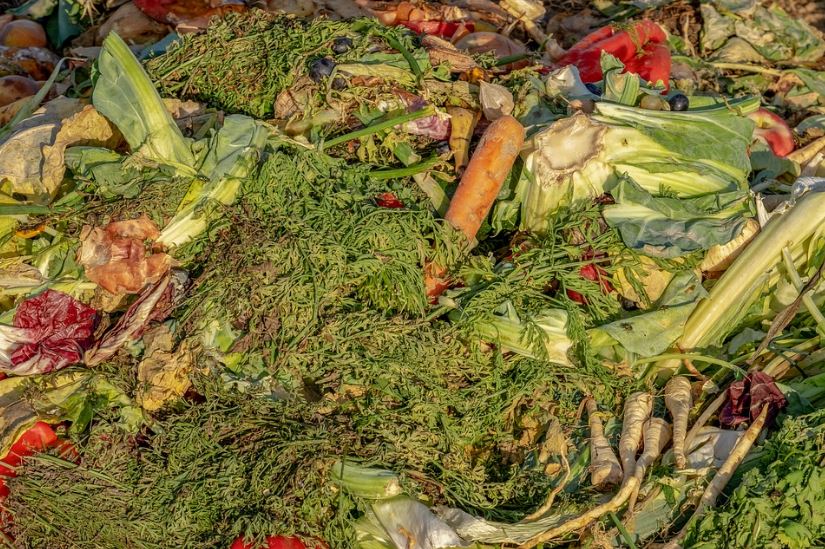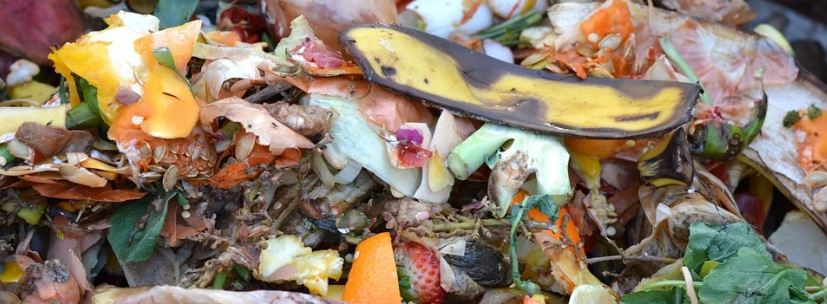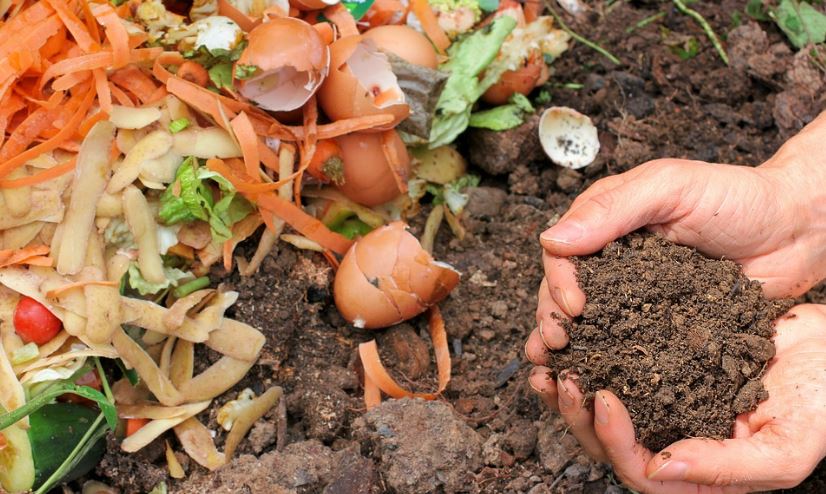Do you believe that compositing is only for people with large yards and sprawling gardens? Think again! The recycling of organic materials to produce finished compost is literally a complicated process. However, you don’t require a lot of space to make it happen!
The good news is that; compositing is not restricted to outdoor spaces either. So, even if you have a small living space, you will still be able to compost successfully. Although the process will look different from the traditional one, but it is not impossible to practice. Wondering how? Well, here we are going to reveal some useful alternatives to compost and its benefits in a small space. Keep reading!
What Is Composting?
Before going deep down into the topic, first you should know what composting is, and why the process is significant.
Composting is basically recycling of organic matter, including yard waste, fruit or vegetable scraps, etc. It is a natural process that can be utilized as a plants’ fertilizer. Especially, if you are someone who doesn’t want to waste food, this process is an alternative way to make something useful out of the trash. You know the best part? The process is eco-friendly.
Three basic ingredients are required for compositing:
Type of ingredient | Browns | Greens | Water |
Materials included | It consists of materials like branches, twigs and dead leaves, etc. | It contains vegetables waste, grass clippings, fruit scraps, coffee grounds and more. | Right amount of water is a significantly important ingredient for compost development. |
Purpose | It provides carbon. | Nitrogen is extracted from it. | It ensures hydration for organic matter breakdown |
How Compositing Works?
The waste, that needs recycling, sits in the landfill and start releasing the methane (greenhouse gas) into the air. As per the US Environmental Protection Agency, one of the largest sources of methane is landfills, throughout the US, that makes composting even more attractive to try out!
What Materials Can Be Used For Compositing?
As mentioned earlier, food scraps are used for the very purpose. Besides, you can utilize:
- Coffee filters and grounds
- Eggshells
- Banana peels
- Nutshells
- Tea bags
- Cardboard
- Shredded newspaper
- Yard trimmings
- Paper
- Grass trimmings
- Leaves
- Hay and straw
- House plants
- Hair and fur
- Wood chips
- Sawdust
- Fireplace ashes
- Cotton and wool rags
Benefits of Compositing
Compost is commonly perceived as a plant food because of high nutrients that are released slowly and are not concentrated like other fertilizers.
Besides, compost is a key source of natural substance required by the soil which is known as humus. The role of this organic material is to improve drainage in the heavy soil and lock moisture in the light, sandy surface. In short, the process:
- Nourishes soil by retaining moisture level and suppressing pests and several plant diseases.
- Reduces the requirement of chemical and artificial fertilizers.
- Encourages bacterial and fungal production that is helpful in breaking down of organic matter and create humus.
- Lowers carbon footprint.
- Reduces emissions of methane from the landfills.
Alternative Ways of Composting in Small Spaces
Most of you must be aware of the importance of composting by now. It is an environmentally safe procedure of recycling yard and food waste while preventing filling up the landfills. Now the question is, how to do that in a small or enclosed space? Well, there are several ways to make it happen. And guess what? You don’t need a back-yard or garden for that either. Here are some of our favorite indoor compositing solutions for you. Have a look!
1. Worm Compositing Bin
The first on the list is known as one of the most inexpensive ways to successfully compost in a small space: worm compositing bins. They are space-efficient, low-maintenance and budget friendly.
All you need to do is:
- Grab a plastic bin with 10-gallon capacity (ideally)
- Include a few damp newspaper
- Add some cups of soil to cover the paper
- Include red-wiggle worms that you can purchase from any local nursery
- Then gradually throw your food scraps (make sure you are not overfilling it), and that’s all.
Easy-peasy!
| Important Tips
The best way to save the leftover scrap is to freeze it until next use. Decomposing takes a couple of weeks; you can use the frozen ones once your worms are ready to consume more. |
2. Bokashi Composter
The second one is a unique method of compositing. Bokashi composter aims to produce a nutritious tea through the process of compost fermentation, which acts as a fertilizer.
The Bokashi has the ability to break down more than traditional and typical decomposing, including meat, bones, dairy products, etc. The only drawback with this method is to deal with the remnants after fermentation.
3. Electric Food Digester
This composter is the most expensive option in the list, but surely a great one for those who can afford.
You simply need to put the waste (including cook or raw food items) in the basket and lock it; the machine will take care of the rest! Once the processing is done; you can take out the fertilizer to feed your plants. Hassle-free!
4. DIY Compost Bin
Don’t want to invest in a digester or composter? No issues! You can create your own compost bin by following a few simple and easy steps. But before moving on, let’s have a look at the type of bins you can use for the purpose.
- Plastic storage bins – it is an easy to obtain and inexpensive option that is available in a variety of sizes. 10 gallons is a good size in this; however, 18 gallons is standard sizing for compositing containers. Plastic bins are stackable and light in weight.
- Five-gallon buckets – another inexpensive option. These buckets are stackable and are available with matching lids.
- Wine crates, old wooden drawers or other boxes – if you have a wine crate or wooden drawer just lying around in the corner of your house, then it is possible to turn it into an indoor composter. Yes, it’s real! However, you need to make a lid for processing, either by using a wood piece or heavy fabric.
Step-by-step guide:
- The first step is to pick a container/bin for the procedure. The type and size are totally up to you, but make sure that it comes with a fitted lid.
| Tip
Usually, 10-gallon containers are enough for two people. However, a family of four would need a 20-gallon bin and so on. |
- Secondly, drill small holes into the lids because a healthy compost requires a lot of oxygen to decompose properly.
- It is suggested to attach a screen or cut-to-measure mesh inside the lid to stop it from becoming a fly feast.
- Start your compost project by adding some shredded, damp cardboard pieces or paper and a cup of soil. Make sure to mix greens and browns for an effective outcome. A healthy recycling bin should have a 2:1 ratio of green to brown. That’s because the decomposing of browns take longer than greens.
- Use a hard garden rake or small hand trowel for mix the compost, if needed.
- Now that your bin is all set to process, the next step is to find a suitable place to keep it safe and out-of-the-way, preferably in the kitchen under the sink or anywhere you wish.
Items That Are Not Recommended For Composting and Why
Compost bin is meant to recycle waste, but that doesn’t mean anything or everything can go inside. There are a few things that should be avoided for logical reasons. Find out what are those and why!
| Bad Choices | Reason |
| Onion peelings | Bad odor |
| Watery waste, like squashes or melons | To prevent the bin contents from getting too soggy. |
| Black walnut tree twigs and leaves | Extract a substance that can be harmful for plants. |
| Charcoal or coal ash | Not good for plants |
| Dairy items, like yogurt, cream, milk, butter. | Attract pest and cause odor issues |
| Insect-ridden or diseased plants | Diseases can be transferred to the plants. |
| Grease, lard, fats and oils | Odor issues, attracts flies and rodents |
| Fish bones and meat | Causes bad odor and attracts flies |
| Pet wastes, cat or dog soiled litter | May contain bacteria, parasites, pathogens, viruses and germs that are not good for plants as well as humans |
| Yard trimmings that are treated with pesticides | May kill beneficial organisms of composting |
Do you know you can actually get rid of garden pests by using soap? Click here to find out how.
Tips for Successful Compost in Small Spaces
Bare these few important tips in mind for successful indoor compositing:
- Add a handful of dry leaves or shredded papers into the bin every time you throw coffee grounds or food scraps to prevent it from getting soggy. Moreover, it also provides carbon to the container.
- Don’t forget to turn the bin contents on and off. It will help in increasing microbial action, maintaining compost temperature and preventing dry or soggy pockets in the basket. You can use a hand trowel or shovel to toss the materials. For the bucket, it is suggested to roll it in back and forth motion for a couple of times to mix well.
- Smaller materials recycle quicker than the larger ones. So, chop the items in tiny bits or tear papers in thin strips for quicker results.
Final Words
Gardening requires quality soil, and you can easily get it without spending on expensive fertilizers! Yes, the good thing is that; you don’t have to invest your time and energy to make it happen either because composting is a natural procedure. All you need to do is, set up a bin with all the necessary ingredients, place the lid and find a suitable place to store it. That’s all. However, the processing time is slow, but worth the wait.
When a garden or yard has compost bins; it is easier to practice compositing. However, the whole procedure can be challenging for people with smaller living spaces. We have mentioned a few effective and pocket-friendly ways for indoor decomposing above to help you fight the obstacles.
In short, compositing is no doubt a great way to recycle waste into something good and there isn’t any space restrictions for it. So, which one of these methods are you going to try out?



